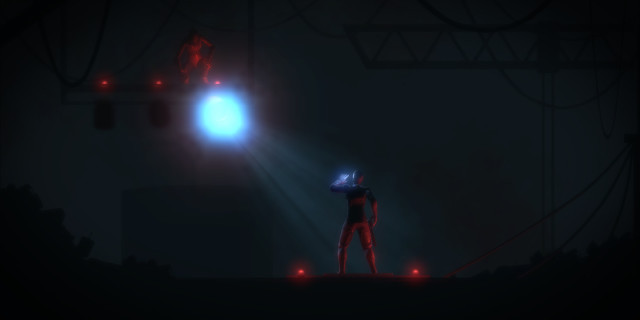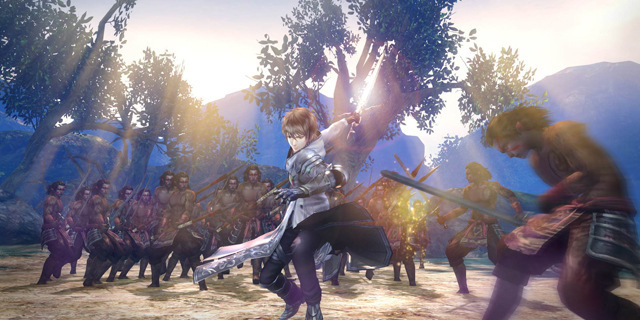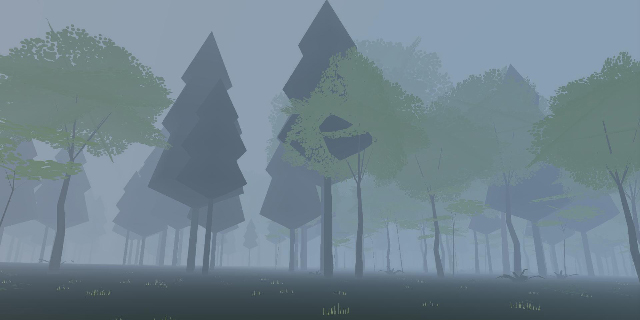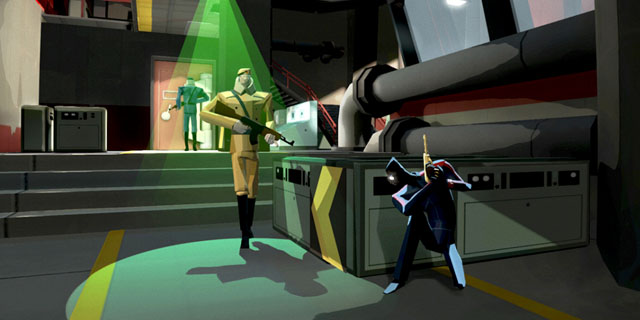
At the outset of Over the Moon Games Studio’s debut offering, The Fall, a figure in an advanced combat suit plummets towards a planet for reasons never explained. Seconds before slamming into a rocky outcropping, the combat suit’s self-defense systems automatically kick in, initiating antimatter shielding that lets the suit blast through the obstacle without harm. The figure then proceeds to carve a fifty-meter hole into the surface before finally coming to rest.
This self-defense system is operated by an artificial intelligence called an armored robotic interface device (ARID), which is also capable of piloting the suit independently should the user within become unresponsive. After a fall like that, “unresponsive” is probably the best-case scenario, but since almost all of the suit’s diagnostics and advanced functions were disabled the AI has no way of knowing anything more than that. Driven by its Asimov-like three parameters — “must not misrepresent reality,” “must be obedient” and “must protect active pilot” — it decides that finding medical attention for its pilot is its primary objective. READ MORE

The long, long line of Musou games thrives on sheer volume of content. Those who aren’t fans of the series will get nothing out of the prospect of doing something they don’t like dozens upon dozens of times, but if you buy into the Warriors formula, you can expect Omega Force to pile your plate high with characters, battles and unlockables. Warriors Orochi 3 Ultimate, the third enhanced edition of the game, adds an extra layer of cameos and modes to a title that already offered quite a bit. READ MORE

Surprisingly hot on the heels of the release of the first game, Danganronpa 2: Goodbye Despair has both the benefit and the challenge of following an experience that is still quite fresh in players’ minds. Considering how much the original Danganronpa turned the visual novel genre on its head, it’s hard not to wonder whether the sequel could live up to its standards.
I’m happy to say that it did that and then some. READ MORE

The “games as art” debate has been brewing more fervently for the past few years, with recent titles such as Proteus, Dear Esther and Gone Home serving as torchbearers for this movement. However, these titles, in which the gameplay mostly involves walking and exploring, stoke another debate: whether they’re “games” at all. For me, many of those games were incredible experiences that I would place right next to any I’ve had with more traditional art forms. Eidolon attempts to walk in the footsteps of the trailblazing games of this genre, but in doing so has gone too far. For the first time, I feel that I really understand the opinion of the other side. Eidolon is beautiful to look at and occasionally captivating, but the pace of the experience left me feeling uncertain. READ MORE

Stealth games have gone through somewhat of a renaissance as of late, augmenting traditionally rigid mechanics you associate with the genre for something more forgiving. This is a way to introduce the genre to new players without alienating the veterans, and it doesn’t seem to be going away anytime soon. CounterSpy continues this new traditional in style, with randomly generated side-scrolling levels and a focus on maintaining the balance between pure stealth and action. READ MORE
























